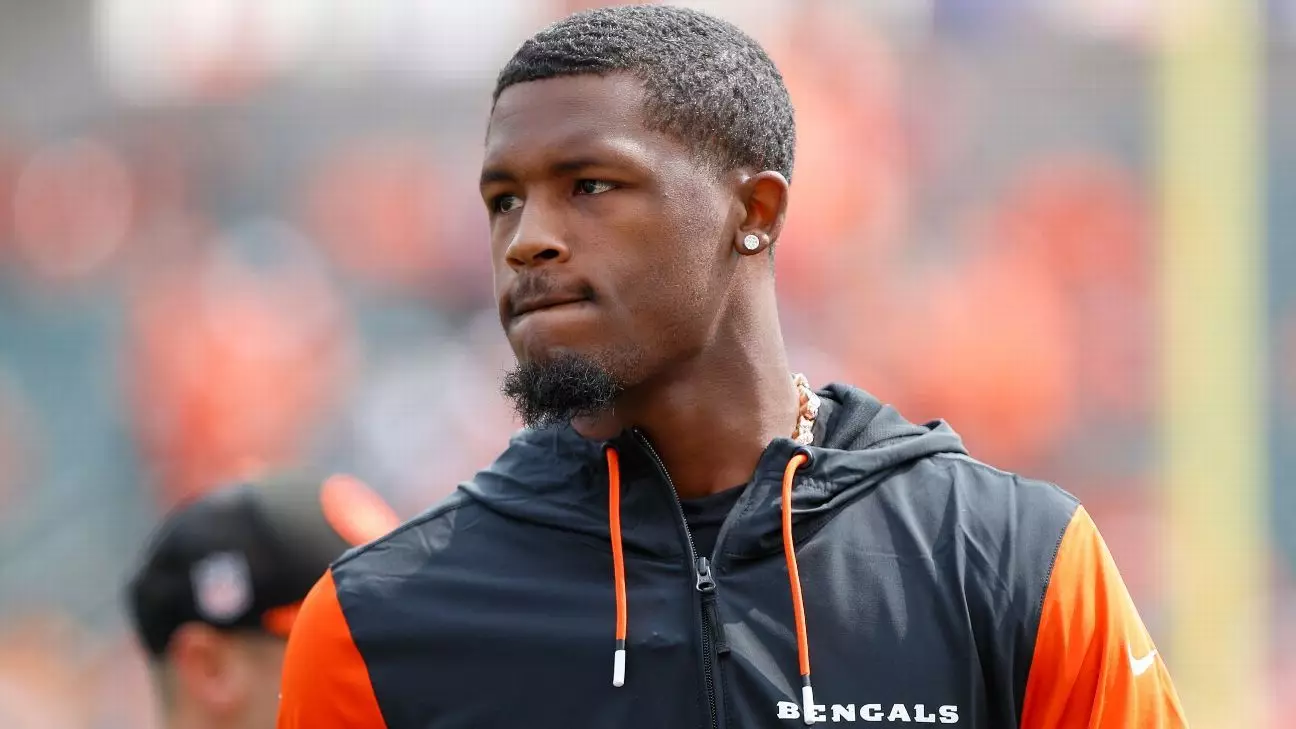In the world of professional sports, narratives can morph rapidly, often diverging significantly from the reality that players experience. This is particularly evident in the case of Tee Higgins, the Cincinnati Bengals wide receiver, who finds himself confronting an onslaught of speculation regarding his recent hamstring injury. Injured during practice on September 5, just days before the Bengals’ season opener against the New England Patriots, Higgins has made it clear that his injury is not a veiled attempt to navigate his ongoing contract negotiations. Understanding the layers of this situation necessitates a careful consideration not only of Higgins’ physical state but also of the surrounding context within which fans and commentators are operating.
The narrative that Higgins could be faking his injury has surfaced from the shadows of fans’ frustrations and anticipations. Higgins directly countered this assumption in a candid interview with ESPN, where he expressed bewilderment at the skepticism regarding his sincerity. He stated, “I just don’t understand why fans think I’m faking an injury.” This perspective is critical, revealing the often-misguided perceptions that fans and outsiders have about the motivations of professional athletes. The intricate relationship between performance, injury, and contract negotiations in the NFL often leads to the emergence of these kinds of misunderstandings, particularly for players like Higgins, who are under the franchise tag and seeking long-term security.
Delving into Higgins’ contract situation adds another layer of complexity. Serving as a franchise player, he was bound by the July 15 deadline, beyond which negotiations for an extension would cease until the conclusion of the regular season. Understanding this timeline elucidates why Higgins signed the franchise tag in mid-June. Imbued with the desire to prove himself fully fit for the impending season, Higgins opted for a path that ensured he could focus his effort on his performance rather than the pressures of contract negotiations. As a result, claiming he is merely leveraging his injury to gain leverage in talks seems far-fetched.
Compounding the issue is the normalization of injuries in the hyper-competitive landscape of the NFL. Athletes frequently conceal their discomfort or downplay their ailments to partake in the game they love and provide value to their team. Higgins encapsulated this dilemma when he remarked on how he prepared to launch into the season, only for an unexpected hamstring tweak to derail his plans. The emotional toll of sidelining oneself, especially in a sport that celebrates physical prowess, often drives players like Higgins to share their frustrations candidly.
As he recovers, Higgins is not merely mending an injury; he is also grappling with the implications of being away from his teammates and the harsh judgment from fans. His focus, he stated, is on returning at full strength, wanting to offer his teammates “100% of Tee Higgins.” This plea is indicative of Higgins’ dedication to contributing fully to the Bengals’ success, transcending personal ambitions or selfish motivations.
Beyond the individual narrative is the collective story of the Bengals as they navigate the ongoing challenges of the season. Coach Zac Taylor’s comments about evaluating Higgins on a day-to-day basis reflect the reality that team dynamics are affected significantly by each player’s status. As Higgins works his way back to health, the interplay between his recovery and the Bengal’s need for skilled playmakers becomes increasingly evident. The franchise’s hopes hinge not just on Higgins’ return but also on his ability to perform at peak levels, thereby synergizing with other offensive players to elevate the team’s performance as a whole.
The confusion surrounding Tee Higgins’ injury merits a critical examination that transcends mere headlines and public discourse. It represents a broader narrative about player agency, public perception, and the intersection of physical health with contractual obligations. In the end, Higgins’ commitment to his craft and desire to contribute provide a powerful counterpoint to any narratives suggesting malfeasance on his part. As fans, analysts, and commentators seek to understand the intricacies of these situations, a more nuanced appreciation of the player’s experience could foster sympathy while ushering in a more informed dialogue about the realities of professional sports.


Leave a Reply